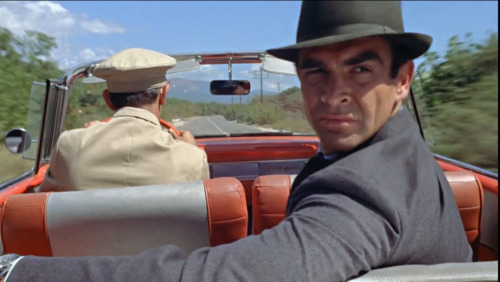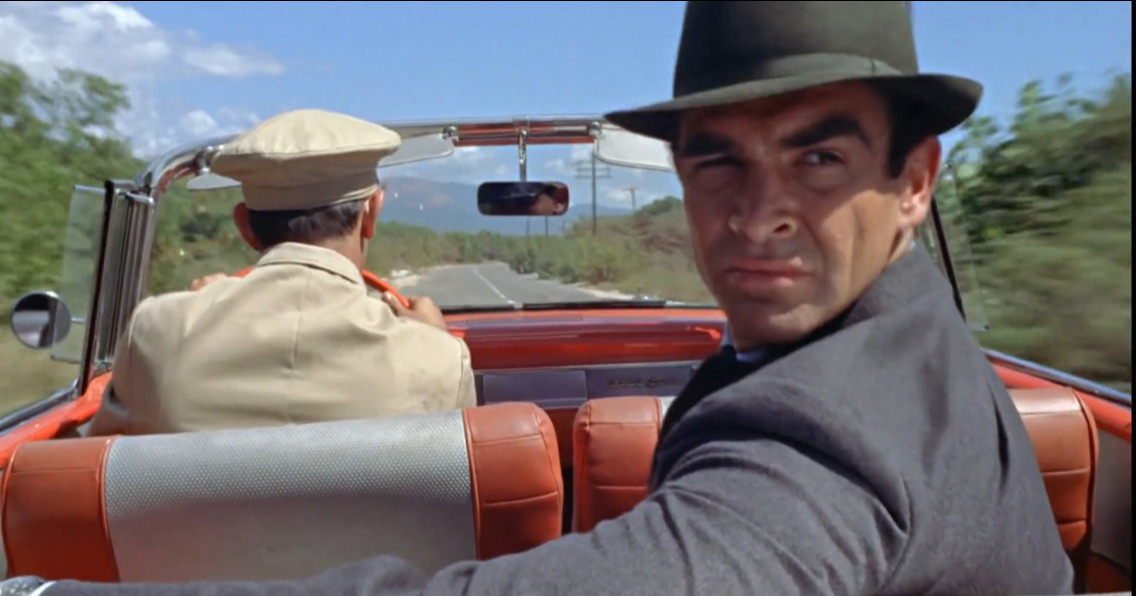
Slob with a blog. Vicariously join me on my movie viewing adventures! Visit my blog here: http://jinglebonesmovietime.blogspot.com
297 posts
DUMBO (Dir: Tim Burton, 2019).

DUMBO (Dir: Tim Burton, 2019).
Being of the opinion that Walt Disney’s Dumbo (Ben Sharpsteen, 1941) is one of the greatest movies ever made, I was not entirely thrilled at the prospect of a remake, in spite of my admiration for director Tim Burton. But, ever the open-minded film enthusiast, I watched it anyways!
Dumbo is, of course, the story of the circus elephant born with oversized ears who silences his naysayers when his ears provide him with the ability of flight.
The first half of Burton’s movie roughly follows the original, while the second half continues Dumbo’s story after the events of the first movie, chronicling his tenure as the star attraction of an early amusement park and a daring rescue attempt of his imprisoned mother.
Predictably it is the first half which suffers most in comparison with the original. While the original movie runs little more than an hour, its basic story is retold here in about 40 minutes. The result of which is the narrative beats all fall a little off the mark. For example, Dumbo’s ability to fly is established within the first 20 minutes of the movie, rather than at the climax. The introduction of an antagonist who is swiftly dispensed with roughly halfway through is also slightly jarring.
Absent are the crows and Timothy Mouse, replaced by elephant wrangler Colin Farrell and his children Nico Parker and Finley Hobbins. The relationship between Dumbo and his only friend Timothy is sorely missed and as a result the emotional core of the movie seems sadly lacking. The tragic-comic original contains both moments of great joy and great sadness, while this Dumbo is content to coast along without reaching such emotional depths.
That said, being a Burton production it looks fabulous and has an appealing cast including a neat turn from Danny DeVito as the circus ringmaster. The Climactic rescue attempt does have some genuine moments of excitement.
By all means watch and enjoy Tim Burton’s Dumbo, especially it’s superior second half. Just don’t expect it to soar to the same thrilling heights as Walt Disney’s masterful original.
Read a longer, more in-depth version of this review on my blog: jinglebonesmovietime.blogspot.com
-
 knoellehinga reblogged this · 5 years ago
knoellehinga reblogged this · 5 years ago -
 knoellehinga liked this · 5 years ago
knoellehinga liked this · 5 years ago
More Posts from Jingle-bones

TOY STORY 4 (Dir: Josh Cooley, 2019).
Since the first movie was released in 1995, the Toy Story franchise has proven to be one of the most robust, not to mention most lucrative, Hollywood franchises of all time. The original film, a Pixar Animation Studios production released through Walt Disney Pictures, was a massive critical and commercial success, spawning a further two equally successful sequels. After the fairly definitive conclusion of Toy Story 3 (Lee Unkrich, 2010), the prospect of a fourth entry seemed to many unnecessary, albeit not entirely unwelcome.
Toy Story 4 reunites Woody, Buzz, Jessie and the gang and introduces new character Forky. Forky, made by the toys' new owner Bonnie from a plastic spork, pipe-cleaners and other discarded items, is determined to throw himself into the trash where he believes he belongs. Determined not to let this happen, Woody places himself in charge of the spork, a decision which results in the pair becoming separated from Bonnie and their pals. As lost toys they encounter the sinister doll Gabby Gabby and her ventriloquist dummy cohorts and Woody is reunited with old flame Bo Peep.
Happily Toy Story 4 is a sequel which lives up to its mighty predecessors. Director Josh Cooley and screenwriters Stephany Folsom and Andrew Stanton have created a movie that is by turns witty, exciting and ultimately moving. Its message is certainly as poignant as others in the franchise and comes with a climax that that seems pretty darn final.
It goes without saying that the computer generated animation in Disney/Pixar's Toy Story 4 is beautiful. Once again, the vocal performances, notably Tom Hanks as Woody, Tim Allen as Buzz, Annie Potts as Bo and Tony Hale as Forky, are exemplary.
This latest episode of the Toy Story saga thankfully does nothing to tarnish what is arguably the most consistent franchise of them all, while its finale suggests that this really will be the last we see of the gang. If this is the case then more's the pity, although Toy Story 4 definitely provides them with a high on which to go out on.
Read an unedited version of this review on my new blog: jinglebonesmovietime.blogspot.com

POKÉMON: DETECTIVE PIKACHU (Dir: Rob Letterman, 2019).
Part of the phenomenally successful Pokémon franchise, Detective Pikachu is the first movie in the series to combine live-action with CGI Pokémon. The somewhat convoluted plot finds insurance salesman and former Pokémon trainer wannabe Tim Goodman (Justice Smith) teaming up with Pikachu (voiced by Ryan Reynolds) to investigating the mysterious death of Tim’s detective father. Tim is the only human who can understand the amnesia suffering Pikachu who has some previous link with the detective.
Visually Detective Pikachu is a highly satisfying film, narratively it is less so. The CGI Pokémon are beautifully realised creatures that integrate believably with the humans and real life surrounds; thankfully there are a wealth of these fabulous beings on display. Main man Pikachu has the requisite level of cuteness while Mr Mime makes a very effective and amusing cameo as a police informant; an encounter with oversized Torterra is visually stunning, as is the climatic battle with it Avengers-level of structural decimation! The film noir-like cityscapes that form the story’s backdrop are also highly impressive.
Where the movie falters is in its narrative which somehow manages to be both predictable and confusing. With a tidier and tighter script Detective Pikachu might have been a modern day Who Framed Roger Rabbit (Robert Zemeckis, 1988); a family friendly infusion of 40’s film noir detective thriller and 2019 high-tech blockbuster. Dedicated Pokémon fans will probably be more forgiving of Detective Pikachu’s short comings. For casual fans and those less familiar with the franchise, it should prove to be a bewildering yet entertaining 105 minutes. For its amazing eye candy alone Pokémon: Detective Pikachu is well worth catching.
Visit my blog JINGLE BONES MOVIE TIME for more movie reviews! Link below.

Movie number 59: The Neptune Factor aka The Neptune Disaster (Daniel Petrie, 1973). Bearing an uncanny resemblance to Hanna-Barbera’s 1972 animated tv series Sealab 2020, The Neptune Factor is a underwater adventure with an all star(ish) cast.
Subsurface research base Oceanlab is hit by an undersea earthquake, damaging the lab and leaving crew members stranded. Project head Walter Pidgeon enlists the help of submarine captain Ben Gazzara and chief diver Ernest Borgnine along with scientist Yvette Mimieux to survey for damage and rescue any survivors. However, the Oceanlab now lies at the bottom of an ocean trench and all manner of menacing sea creatures stand (swim?) between it and the rescue team.
Although partly filmed in the sea off Nova Scotia and in the Caribbean, it would appear that most of the trick photography was achieved in a studio; the effects are a mix of obvious model work and blown up footage of marine life. Edited in such a way that it is never completely convincing that men and monsters inhabit the same plane, as such, any sense of excitement that these sequences should have generated is lost.
Despite which, I feel it would be unfair to label the movie a total wreck. The earthquake scenes are impressive and Ernest Borgnine is always worth watching. As a whole, I did enjoy it but found parts of it rather dull, largely due to Daniel Petrie’s uninspired direction and a Jack DeWitt script which is short on thrills. This, more than anything, proves to be the movie’s undoing.
In an attempt to cash in on the then current craze for disaster movies the film was retitled The Neptune Disaster in some territories. However, it feels much closer to schlocky 70’s sci-fi than to the disaster genre. Sadly, The Neptune Factor is one of those movies where the poster art is more impressive than the actual movie; an ambitious underwater sci-fi ultimately waterlogged by a pedestrian screenplay and average special effects.

DR NO (Terance Young, 1962).
NOTE: The following is an edited version of a review available in full on my blog JINGLE BONES MOVIE TIME. Check it out! Link below.
The film that launched the longest running franchise in movie history. Sean Connery stars as Ian Fleming’s James Bond 007 in this adaptation of the sixth novel in the series.
Investigating the disappearance of fellow MI6 operatives, Bond heads to Jamaica and is soon on the trail of the titular Dr No, an underground dwelling, Nemo-esq scientific genius with plans to wreck the US space programme. Fist fights, shoot-outs and car chases ensue!
In many respects, Dr No is Bond in its purest form. Before the over reliance on gadgets, before the campy, double entendre laden humour, before the over the top action set pieces. Connery is perfect in the role: suave yet cool, a lover and a fighter. He is surrounded by a classy supporting cast. As Island girl Honey Ryder, Ursula Andress set the standard for Bond girls, emerging like Venus from the ocean in a two-piece swimsuit and creating one of the most iconic images of the entire series. Jack Lord and John Kitzmiller make appealing allies for Bond, while Bernard Lee and Lois Maxwell make their first appearances as Bond’s MI6 boss M and his flirtatious secretary Miss Moneypenny, respectively.
Director Terance Young never lets the pace flag. Dr No is one of the shorter Bonds but Young never wastes a second as he delivers a gripping, intelligent thriller.
Rewatching the movie almost 60 years after release it is fascinating to see how much of what we associate with the series is already present. Refinements were made to the formula over the coming films but I don’t think this series opener was ever bettered. Equalled maybe, but it has a certain economic, raw, unpolished appeal that box office success and bloated budgets would not allow for in the future. Six decades on this is still a fantastic piece of popular cinema. Intelligent in a way action movies rarely are today, shot through with streak of sardonic humour. If you are only familiar with later entries than this original classic should really be next on your Bond viewing list!
100+ movie reviews now available on my blog JINGLE BONES MOVIE TIME. Link below.

